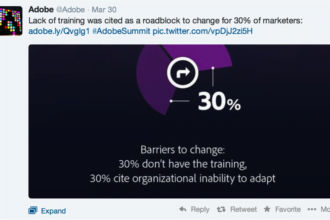 Get started on the right foot! Though it is somewhat cliche, you should definitely keep this in mind when working with a new customer. The end of a positive sales campaign doesn’t mean the journey has ended; it simply marks the beginning of a new road, one that when approached correctly, will lead to customer success.
Get started on the right foot! Though it is somewhat cliche, you should definitely keep this in mind when working with a new customer. The end of a positive sales campaign doesn’t mean the journey has ended; it simply marks the beginning of a new road, one that when approached correctly, will lead to customer success.
 Get started on the right foot! Though it is somewhat cliche, you should definitely keep this in mind when working with a new customer. The end of a positive sales campaign doesn’t mean the journey has ended; it simply marks the beginning of a new road, one that when approached correctly, will lead to customer success. Achieving customer success should be more than just a campaign — it should be a mindset adopted by the entire organization and recognized as a component as a valuable as the product itself.
Get started on the right foot! Though it is somewhat cliche, you should definitely keep this in mind when working with a new customer. The end of a positive sales campaign doesn’t mean the journey has ended; it simply marks the beginning of a new road, one that when approached correctly, will lead to customer success. Achieving customer success should be more than just a campaign — it should be a mindset adopted by the entire organization and recognized as a component as a valuable as the product itself.
As marketing professionals around the world know, your relationship with your customer is an ongoing process. In order to ensure that a customer remains happy and satisfied, the mindset for achieving customer success must begin before point of sale and continue throughout the entire lifecycle. After all, increasing customer retention by 5% will increase your profits by 25%-95%. Don’t waste any time: The customer’s experience and interaction with you and your product in the first few months is the most crucial, and it will determine whether or not they become customers for life.
Though your approach to achieving customer success will vary depending on your business goals, there are a few things that should remain consistent. An impactful road to customer success should follow these steps in the first three months:
Build the Foundation
Just like the beginning of any relationship, a relationship with a client should always begin with getting to know everything about them. In the SaaS world, that means building a 360-degree profile of your client. Identify your customer’s strengths and weaknesses so you know what areas need the most focus and growth, and can customize your strategy to meet those needs. Customer development is all about creating the optimal pairing of client and product, so a relationship built on a strong foundation will result in happier customers.
User Onboarding and Adoption
User onboarding refers to the customer starting to use your product. It is crucial that the customer is properly trained on the product so that the benefits can be maximized, and users can see immediate results from their end. Focus on the business outcomes they’ll achieve, not merely what buttons they need to press. User onboarding is not just about starting to use the product, but proving a great enough value that the customer continues to use the product.
Adoption is the direct segway from user onboarding when a customer decides to fully commit to the product. Is there a reason that the customer isn’t leveraging all the benefits from the product? Additional training may be needed to get the user comfortable with your product so they can begin to use it on a daily basis.
First Follow Up / Customer Survey
After you’ve built the foundation and your customer is fully committed to the product, it’s time to receive some feedback. We firmly believe that product usage data is a valuable signal but it’s not the only one you should be thinking about.
Customer research is critical, but doesn’t have to be complicated: By conducting surveys and obtaining feedback from customers, you create a relationship between yourself and the customer. Obtaining information on how they discovered your product, what they like about your product, what they wish was different about the product, etc., can prove helpful for the future. In this infographic, 51% of customers indicated that they switched businesses due to poor experiences and an overwhelming 81% said that the company could have prevented it.
These surveys can help you identify unhappy customers and areas that need to be focused on before it’s too late. Developing a relationship between yourself and the customer creates customer loyalty — your most important and successful customers are those that utilize this survey as an opportunity to improve the product they already enjoy.
Begin to Identify Advocates
Companies should try to identify potential advocates as early as possible because advocates, buy more, refer more and can meaningfully reduce the cost of acquiring new customers. Potential advocates can be spotted by looking at your usage data and combining it with your survey results.
Customers that are happy with your product, find high value in your product and enjoy using your product will naturally want to share your product with others. Inviting them to join an advocacy program will give them the push they need to start sharing, and can create strong brand advocates. Advocates are important because they provide a more trustworthy voice than your direct marketing; a person is more likely to trust a friend than an infomercial. In fact, 92% of people trust recommendations from their peers whereas only 33% trust online ads. It’s important to identify who your advocates are, for they can help market the product.
Keep in mind this is just a guide to what the first three months of the road to customer success should look like. After three months, more elements will come into play. A continual push to drive adoption and create a base of advocates should be an ongoing process. And of course, continuing engagement with the customer is important, no matter where you are in the lifecycle, to ensure customer satisfaction longevity.







